Military Style Workout Routine (Detailed Strength Training Program)
Author:
Reviewed by:
(21 years of Oly Lifting experience)
Unlock your full potential by engaging with our experts and community! Have questions about your fitness journey or looking for expert advice on weightlifting techniques? Don’t hesitate — leave a comment below and Sergii Putsov will provide a personalized answer and insights to help you reach your goals.
Torokhtiy is reader-supported. Some links are affiliate links, and we may earn a commission at no extra cost to you. See our disclosure page for details.
So you want to train like military personnel?
Regardless of if your goal is enrollment or you simply achieving high levels of physical fitness for personal reasons, adopting a military workout plan is an excellent idea.
This article will teach you the basic principles of military training, explain what makes it great, and provide you with an example military strength and conditioning program you can adopt starting ASAP.
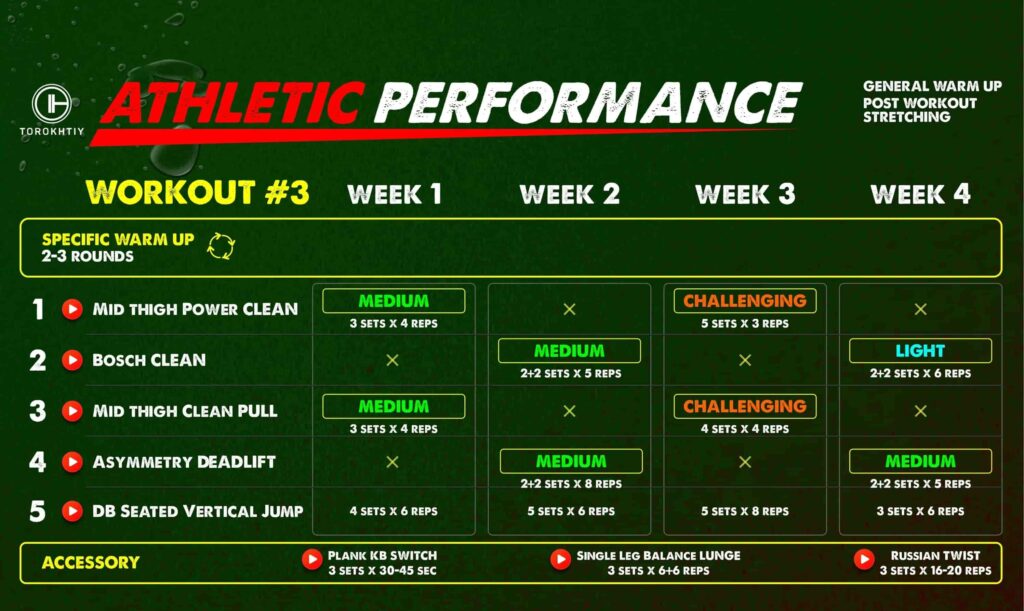
Adopting a Military Workout Plan is a great way to stay in peak physical condition year-round. Military style workouts combine strength, cardio, and functional exercises into a well-rounded workout that, among other benefits, helps you stay physically and mentally healthy and ready for anything.
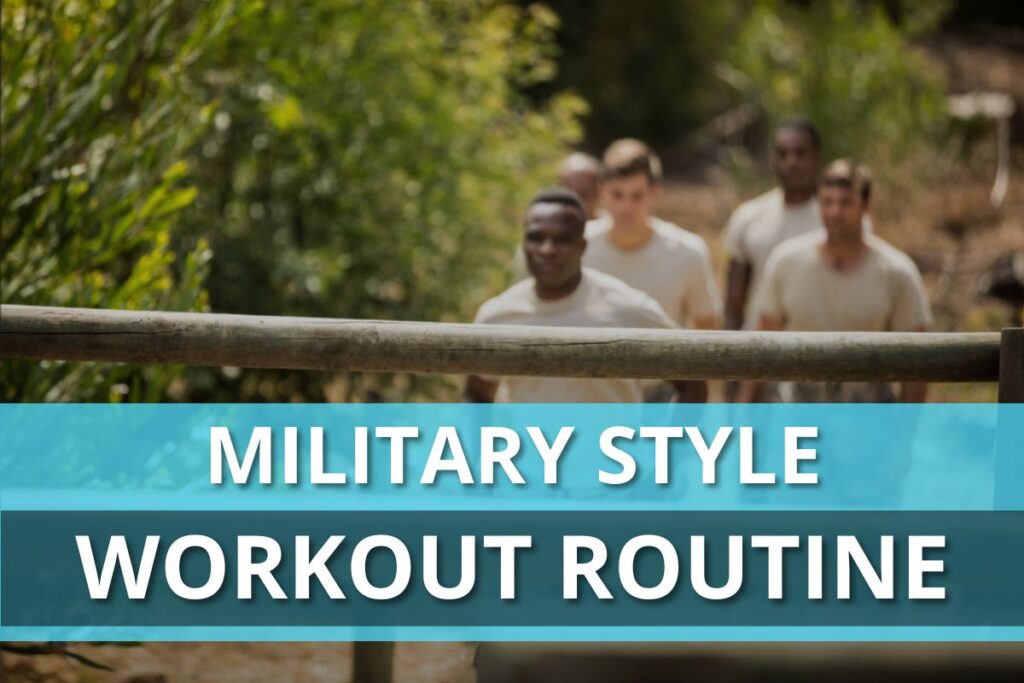
What Is A Military Workout Plan?
As the name suggests, military workout plans are structured fitness programs designed for military personnel.
The difficulty level of the plan varies depending on the unit rank, however, military workouts are well-known for their high intensity even in the junior ranks.
This is because military workout programs not only contain strength and endurance training, but also put a lot of emphasis on discipline and mental resilience as well.
The goal of these plans is to maintain optimal physical fitness levels throughout the year and prepare military personnel for physical fitness tests, which determine whether they’re combat-ready or not.
For example, U.S. military personnel take the Army Combat Fitness Test (ACFT) biannually for active-duty soldiers or annually for Army Reserves and the National Guard.
Even basic training army workouts involve a combination of:
- Cardiovascular exercises – such as running, swimming, or cycling
- Strength exercises – such as push-ups, pull-ups, and weight lifting
- Plyometric exercises – such as box jumps, burpees, broad jumps
- Functionality exercises – load carry, farmer’s walks, medicine ball slams
Apart from those, military personnel often train on obstacle courses that involve things such as rope climbing, wall climbing, monkey bars, as well as various loaded carry exercises.
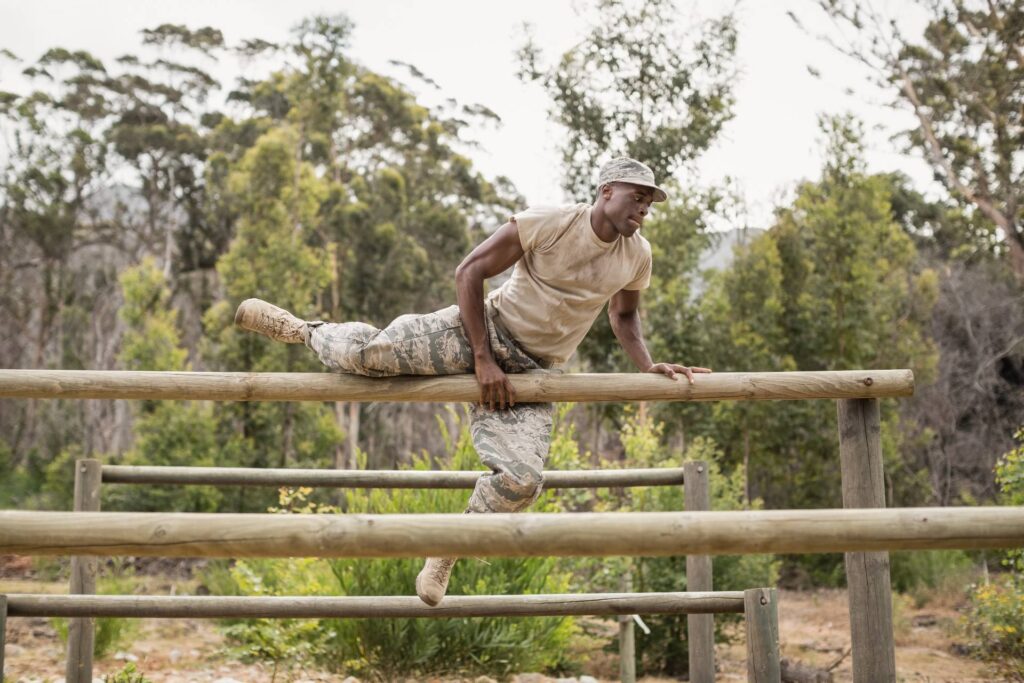
A military workout routine is usually created with universal requirements for a specific unit, taking into account their age range, gender, rank, and job demands, although custom workouts are sometimes created depending on the individual’s goals.
Benefits Of Strength Training For Militarians
High Level Of Physical Fitness
Military workout programs must keep active personnel at high levels of physical fitness all year round.
They’re designed to be well-rounded, focusing on strength, performance, endurance, mental toughness, and everything in between.
Additionally, military workouts for weight loss naturally reduce body fat and build lean muscle mass, resulting in a more athletic and toned physique.
Injury Prevention
Military workouts emphasize functional fitness, which mimics movements and demands of real-life activities, such as lifting and carrying heavy objects, running, jumping, and climbing.
Apart from building physical strength, they help prevent injury down the line by improving joint stability, increasing flexibility and mobility, and reducing muscle imbalances.
This leads to a better quality of life, especially as you age.
Healthy Lifestyle
The military highly promotes a healthy lifestyle.
For example, use of substances that have negative effects on physical fitness, overall health, and job performance is completely restricted in many branches of the military.
For example, even smoking and drinking, a common occurrence in everyday life, are either heavily discouraged, sanctioned, or prohibited.
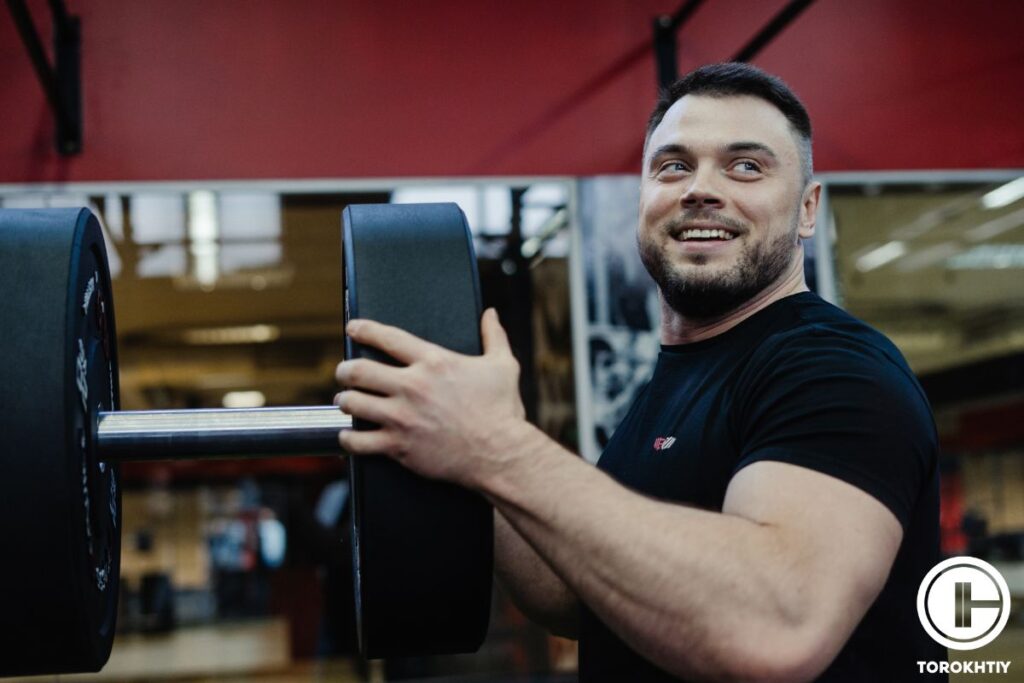
On top of that, military personnel are highly physically active and it’s no secret that regular exercise is good for your health.
Compared to the general population, military personnel have lower chances of developing chronic illnesses such as diabetes, heart disease, and obesity, and have a lower mortality rate from common causes such as cancer.
Strength Training Exercises For Militarians
As discussed so far, military style workouts are some of the most well-rounded, as military personnel is trained in both physical and functional fitness.
The plans are also created to be highly efficient, as the military has a strict daily schedule.
With that in mind, here are some common exercises you’ll see in a military prep workout, broken down by category so they’re easier for you to remember.
Compound Exercises
Compound exercises involve weightlifting movements that work out multiple muscle groups and joints at once.
They also involve plenty of functional movements that will increase your mobility, agility, and explosiveness.
This makes them a popular choice in any military weight lifting program, as they’re both highly effective and time efficient.
Here are some of the most popular and effective compound exercises common in military training:
Deadlift
This exercise primarily works the back, glutes, hamstrings, and core, as well as grip strength. To perform a Deadlift, start by standing with your feet shoulder-width apart and bending down to grip a barbell on the ground with your palms facing down and your hands shoulder-width apart. Brace your core and lift the bar off the ground, keeping your back straight and your arms fully extended. Stand up with the bar, thrusting your hips forward and pulling your shoulders back.
Squat
Squats primarily exercise your quads, hamstrings, glutes, and core, as well as develop explosiveness in your legs. To perform a Squat, start by standing with your feet shoulder-width apart and rest the barbell across your upper back or hold a dumbbell or kettlebell to your chest. Brace your core, then squat in a downward motion by bending your knees and pushing your hips back, keeping your weight on your heels and your back straight. Go down with a comfortable range of motion with a proper posture, then push back up to the starting position.
Bench Press
The Bench Press is a popular upper body exercise that works out your chest, shoulders, and arms. To perform the exercise, start by lying on a bench and holding a barbell or a pair of dumbbells slightly wider than shoulder-width apart directly above your chest. Lower your arms down to your chest, then push back up to the starting position.
Pull-Up
Pull-ups primarily exercise your back and arms, as well as develop grip strength. There are many variations of this exercise, including the classic pull-up, chin-up, military pull-up, and more, all of which slightly alter the grip position and body parts being worked. To do a basic pull-up, simply hang from the pull-up bar with your palms placed slightly wider than shoulder-width apart. Keep your core tight and your legs straight and pull your body up towards the bar, until you pass over it with your chin, then lower your body back down in a controlled manner.
Upper Body Exercises
Military Press
Aptly named, the Military Press is an upper body exercise that targets the shoulders, triceps, and upper back muscles. To perform a Military Press, stand with feet shoulder-width apart and hold a barbell or a pair of dumbbells at shoulder height, palms facing forward. Brace your core and press the weight overhead by extending your arms and lifting the weight straight up. Lower the weight back down to shoulder height in a controlled manner. Military Press can also be performed seated.
Bent-Over Rows
Bent-over Rows target the back muscles, biceps, shoulders, and core, and improve posture. To perform, stand with feet shoulder-width apart, holding a barbell or a pair of dumbbells at arm’s length, palms facing down. Bend forward at the waist until your upper body is nearly parallel to the ground, keeping your back straight and knees slightly bent. Pull the weight up towards your chest by bending elbows and squeezing shoulder blades together, then slowly lower the weight back down to the starting position, and repeat.
Biceps Curls
Biceps curls are a classic arm exercise. To perform biceps curls, start by standing with your feet shoulder-width apart and holding a dumbbell or barbell with an underhand grip, with your arms fully extended at your sides. Keep your elbows close to your body and your wrists straight, then curl the weight up towards your shoulders by bending your elbows. Squeeze your biceps at the top of the movement, then slowly lower the weight back down to the starting position.
Triceps Extensions
Triceps extensions are excellent for developing the back of your upper arm. To do triceps extensions, stand with feet shoulder-width apart, hold a dumbbell or barbell with an overhand grip, and fully extend your arms overhead. Lower the weight behind your head by bending your elbows while keeping your elbows close to your head and wrists straight. Return to the starting position by contracting your triceps and extending your arms, and repeat.
Lower Body Exercises
Many of the compound exercises mentioned above already cover a good amount of lower-body training. However, here are some extra exercises targeting specific lower-body muscle groups:
Lunges
Lunges are a versatile lower body exercise that primarily target the quadriceps, hamstrings, and glutes, while also engaging the core and improving balance and stability. To perform lunges, stand with your feet hip-width apart and take a big step forward with one foot. Lower your hips down until both knees are at a 90-degree angle, with your front knee tracking over your ankle and your back knee hovering just above the ground. Push back up to the starting position and repeat with the opposite leg.
Calf Raises
Calf raises are a simple, but effective exercise that targets the calf muscles in the lower leg. To do calf raises, start by standing with your feet shoulder-width apart and your toes pointing forward. Raise your heels off the ground by pushing up onto the balls of your feet, then slowly lower your heels back down to the ground. You can perform calf raises with bodyweight alone or with added resistance in the form of dumbbells or a barbell.
Step-Ups
Step-ups are a lower body exercise that primarily targets the quadriceps, hamstrings, and glutes, while also engaging the core and improving balance and stability. To perform step-ups, you’ll need to use an elevated surface, such as a bench, box, or other raised surface. Place one foot firmly on the raised surface, then step up onto it by pressing through your heel and straightening your leg. Lift your opposite knee up towards your chest, then step back down to the starting position. Repeat for the desired number of reps before switching to the other leg.
Core Strength
Planks
Planks target the core muscles and are performed from a push-up position, lowering onto the forearms. Engage the core by squeezing the glutes and pulling the stomach in towards the spine. Hold for a set time, maintaining proper form and breathing deeply. Planks are important for military personnel as they’re a standard exercise in the Army Combat Fitness Test (ACFT).
Sit-Ups
Sit-ups are a common military abdominal exercise. Start by lying on your back with your knees bent and your hands behind your head, elbows wide. Engage your core by squeezing your glutes and pulling your belly stomach in. Lift your head, shoulders, and upper back off the ground, then lower back down and repeat.
Farmer’s Walk
The farmer’s walk is a functional exercise that targets the grip, forearms, and core and is excellent for overall endurance. Perform the Farmer’s Walk by standing with feet shoulder-width apart, holding heavy weights in each hand. Lift the weights up to your sides with a neutral grip, keeping your core braced and back straight. Take small, controlled steps, walking forward while maintaining level shoulders. Continue walking for a set distance or time, and then lower the weights.
Sandbag Carry
The Sandbag Carry is a full-body exercise that targets the legs, back, and core. Start by lifting the sandbag off the ground and hold it at your chest or on your shoulders, then begin walking forward with small, controlled steps while keeping your back straight and your core engaged. Focus on keeping the sandbag close to your body and switch up the carrying positions for variation.
Cardio And Functionality
Running
Self-explanatory. For example, sprinting, shuttle walks, high knees, butt kicks, etc.
Inclined Walk
The Inclined Walk is a simple yet effective exercise that targets the legs, glutes, and core, while also improving cardiovascular endurance. To perform the Inclined Walk, find a hill or incline and begin walking up at a moderate pace, focusing on maintaining proper form and keeping your core engaged throughout the movement. Alternatively, you can use stairs.
Box Jumps
Use a plyometric box or find an elevated surface and simply jump on it with your full foot. Box jumps are excellent for explosiveness and balance.
Battle Ropes
Battle Ropes target the arms, shoulders, and core, while also improving cardiovascular endurance. Start by holding onto the ends of a rope that’s anchored to a sturdy object. Standing with your feet shoulder-width apart and knees slightly bent, move your arms up and down to create waves in the rope. You can also alternate your arms, perform circles, or incorporate jumps or lunges to increase the intensity. Battle Ropes improve upper body strength, explosiveness, and grip strength, while also burning calories and increasing heart rate.
Jump Rope
Self-explanatory. Exercises like Jumping Jacks can be a good alternative if you don’t have a rope.
Burpee
To perform a burpee, start in a standing position, then drop down to a push-up position, perform a push-up, jump back up to a standing position, and jump with your hands reaching for the ceiling. It’s a great exercise for building strength, cardiovascular endurance, and burning calories.
Key Factors In Militarians’ Strength Training Routine
Discipline
Military personnel often operate under a tight schedule and must manage their time effectively.
This means waking up on time, training nearly every day, organizing your life, and maintaining a schedule.
There are no cheat days, no laying around in bed, and definitely no skipping workouts unless for good reason.
Military lifestyles are known to transfer into people’s personal lives, and ex or active military personnel are known for their high levels of discipline
Readiness And Adaptability
Military personnel are trained to be ready for action. Army workout routines keep you physically and mentally healthy all year-round. Military lifestyles promote teamwork, but also independence and maturity through adopting personal responsibility.
Mental Resilience
A soldier must be able to cope with high levels of stress and adversity. They must be quick to adapt to various situations. Physical exercise is known for its ability to improve mental health, stress tolerance, and resilience. Additionally, military personnel train with a higher purpose in mind and always have set fitness goals.
Follow us!

Free!
Get a 2-week Weightlifting Program as a bonus for the subscription to kickstart your training plan!

Free!
Militarians Strength Training Program
According to the Army Physical Training Guide (PRT), you’re expected to commit to at least 45 minutes for four to five days each week for physical training.
Here is an example of a basic weekly military fitness program involving 5 training days and 2 rest days, using the above-mentioned exercises.
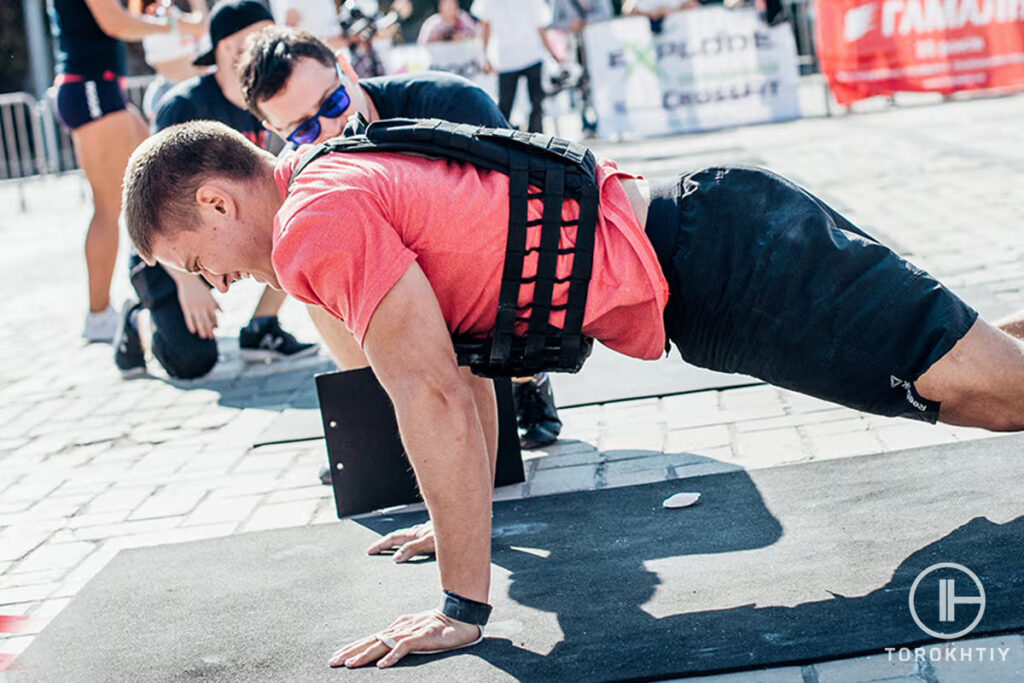
The order in which you do the days and exercises isn’t strict, however, it’s a good idea to have rest days after lower body and core training, as these muscle groups can easily get overworked and may require additional rest to avoid pain and injury.
For more advanced athletes, feel free to add your own favorite exercise alternatives to the ones mentioned.
Day 1: Upper Body
- Bench press: 3 sets x 8-10 reps
- Military press: 3 sets x 8-10 reps
- Pull-ups: 3 sets x 8-10 reps
- Bent-over rows: 3 sets x 8-10 reps
- Biceps curls and Tricep extensions: 3 sets each x 10-15 reps
Day 2: Cardio
- Inclined walk: 10-15 minutes
- Light Jog: 10-15 minutes
- Steady Pace Run: 30 minutes
- High-intensity run: 5-10 minutes
Note: If possible, set aside a day every couple of weeks to visit an obstacle course. If you can’t find one in your area, look for outdoor gyms, calisthenics parks, and street workout spots. These typically have at least some similar equipment, such as climbing ropes, monkey bars, climbing walls, etc.
Day 3: Lower Body
- Squats: 4 sets x 8-10 reps
- Deadlifts: 4 sets x 8-10 reps
- Lunges: 4 sets x 8-10 reps
- Calf raises: 3 sets x 12-15 reps
- Step-ups: 4 sets x 8-10 reps
Day 4: Rest Day or Active Recovery
Save it for easy access!
Bookmark this page now to access the program and instructional videos anytime, anywhere.
Stop wasting time searching during your gym sessions.
Day 5: High-Intensity Interval Training (HIIT)
The idea is to do all exercises in fast intervals, with 30-60 seconds of exercise followed by 30-60 seconds of rest, for about 60 minutes. You can order them as you wish, just make sure you can quickly and safely engage in them.
- Running (for example shuttle runs, sprints in place)
- Box Jumps
- Jump Rope
- Jumping Jacks
- Burpees
- Battle Ropes
- Repeat for a total of 4-5 rounds, feel free to add your own exercises
Day 6: Core Strength
- Deadlift: 4 sets x 8-10 reps
- Plank: 3 sets x 30 seconds
- Sit-ups: 3 sets x 12-15 reps
- Farmer’s walks: 25-50 feet in 30-60 seconds
- Sandbag carry: 25-50 feet in 30-60 seconds
Day 7: Rest Day or Active Recovery
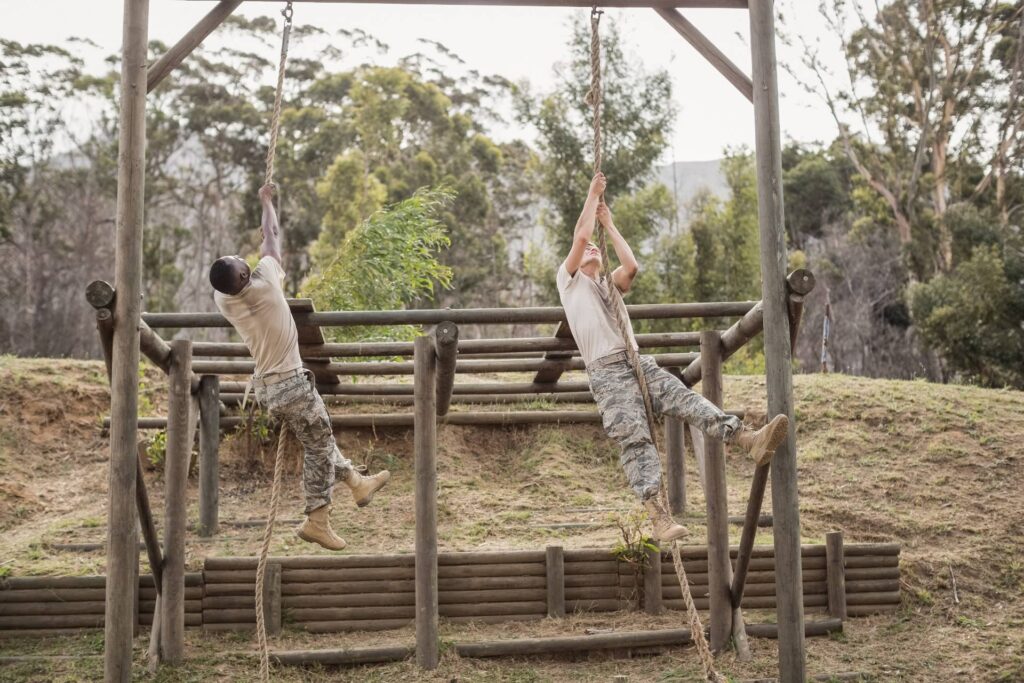
Basic Equipment You Need For Military Training
Almost every public gym has supplies necessary for basic army workout routines.
If you don’t have access to a gym or want to build your own, here’s a short list of the things you’ll need:
- Barbell and bumper plates
- Dumbbells and/or kettlebells
- Weight bench
- Pull-up bar
- Exercise mat
Additionally, here’s some equipment you may want to have, but can also find DIY solutions for:
- Plyometric box – any elevated, even surface
- Battle rope – an old thick rope or watering hose
- Sandbag – an old duffel bag, backpack, or even a large tire
- Jump rope – a piece of thin, tightly woven rope
FAQ
What Lifts Are Best for Militarians?
The best lifting exercises for military personnel include compound exercises such as the deadlift, squat, bench press, overhead press, and similar.
Does Weightlifting Help Militarians?
Yes, weightlifting is highly recommended and used in military workouts.
Apart from building physical strength, weightlifting can enhance bone density and joint health, which is important for individuals who may carry heavy loads or wear heavy equipment for extended periods of time, such as military personnel.
How Often Should a Militarian Lift Weights?
The frequency at which military personnel lift weights depends on their rank and performance requirements. However, a typical military weight lifting program includes lifting weights 2-3 times per week.
Conclusion
Adopting a military workout plan into your training regimen is a guaranteed way to achieve high levels of fitness.
Military style workouts are well-rounded and functional. Apart from raw strength, they develop speed, agility, balance, coordination, endurance, physical and mental resilience, and more. All of this not only translates into high levels of physical capability and health, but better quality of life down the line, too.
Did you serve in the military or a similar public defense occupation? What do you admire the most about their workout regimen and lifestyle? Share your thoughts in the comments and remember to follow me on social media for more valuable fitness content.
Also read:
- Strength Training for Football Players
- Strength Training for Throwers
- Golf Weight Training Program
- Strength Training for Swimmers
- Strength Training for Tennis Players
- Strength Training for Runners
- Strength Training for Boxers
- Battle Rope Benefits
- Gym Bag Guide
- Medicine Ball Guide
- Weight Bench Guide
References:
- Photos by Torokhtiy Media Team; Wavebreakmedia, Canva.com.
Why Trust Us?
With over 20 years in Olympic weightlifting, strength training, nutrition coaching, and general fitness our team does its best to provide the audience with ultimate support and meet the needs and requirements of advanced athletes and professional lifters, as well as people who strive to open new opportunities and develop their physical capabilities with us.
By trusting the recommendations of our certified experts in coaching, nutrition, and sports training programming, as well as scientific consultants, and physiotherapists, we provide you with thorough, well-considered, and scientifically proven content. All the information given in the articles concerning workout programming, separate exercises, and athletic performance, in general, is based on verified data.
The product testing process is described in more detail here.
Author: Sergii Putsov
Head of Sport Science, PhD
Best Results: Snatch – 165 kg,
C&J – 200 kg
Sergii Putsov, Ph.D., is a former professional weightlifter and National team member, achieving multiple medals in the 94 kg weight category at national competitions. With a Master’s degree in “Olympic & Professional Sport Training” and a Sport Science Ph.D. from the International Olympic Academy, Greece, Sergii now leads as the Head of Sport Science. He specializes in designing training programs, writing insightful blog articles, providing live commentary at international weightlifting events, and conducting educational seminars worldwide alongside Olympic weightlifting expert Oleksiy Torokhtiy.
Reviewed by: Oleksiy Torokhtiy
Olympic Weightlifting Champion, PhD in Sport Science
Best Results: Snatch – 200 kg,
C&J – 240 kg
Oleksiy Torokhtiy is a professional athlete boasting 20 years of experience in Olympic weightlifting. With multiple European and World titles under his belt, he has showcased his prowess in two Olympic Games (Beijing 2008 and London 2012). Upon concluding his illustrious career, Oleksiy dedicated himself to coaching. By 2022, he had conducted over 200 weightlifting seminars worldwide. He is the visionary behind an international sportswear and accessories brand known for its motto, “Warm Body Cold Mind.” Additionally, he is an esteemed author and the creator of a series of training programs and eBooks.




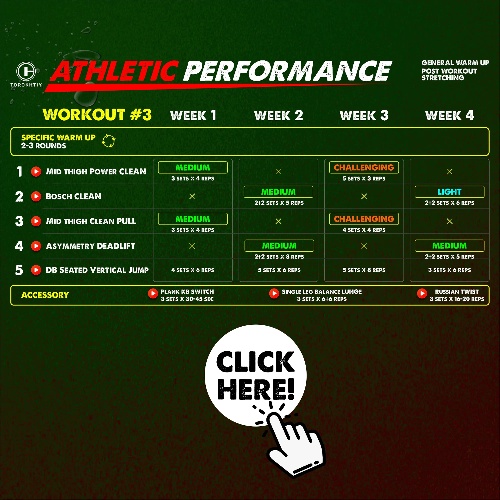


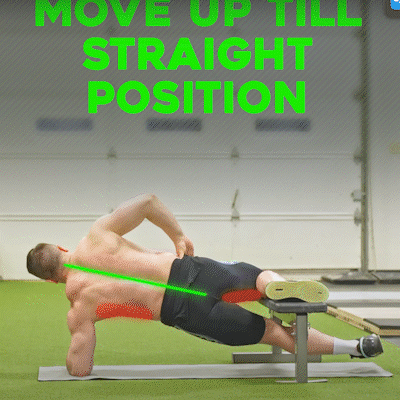
Still have questions after reading our article? Unlock your full potential by engaging with our experts and community! Don’t hesitate — leave a comment below and Sergii Putsov will provide a personalized answer and insights to help you reach your goals.